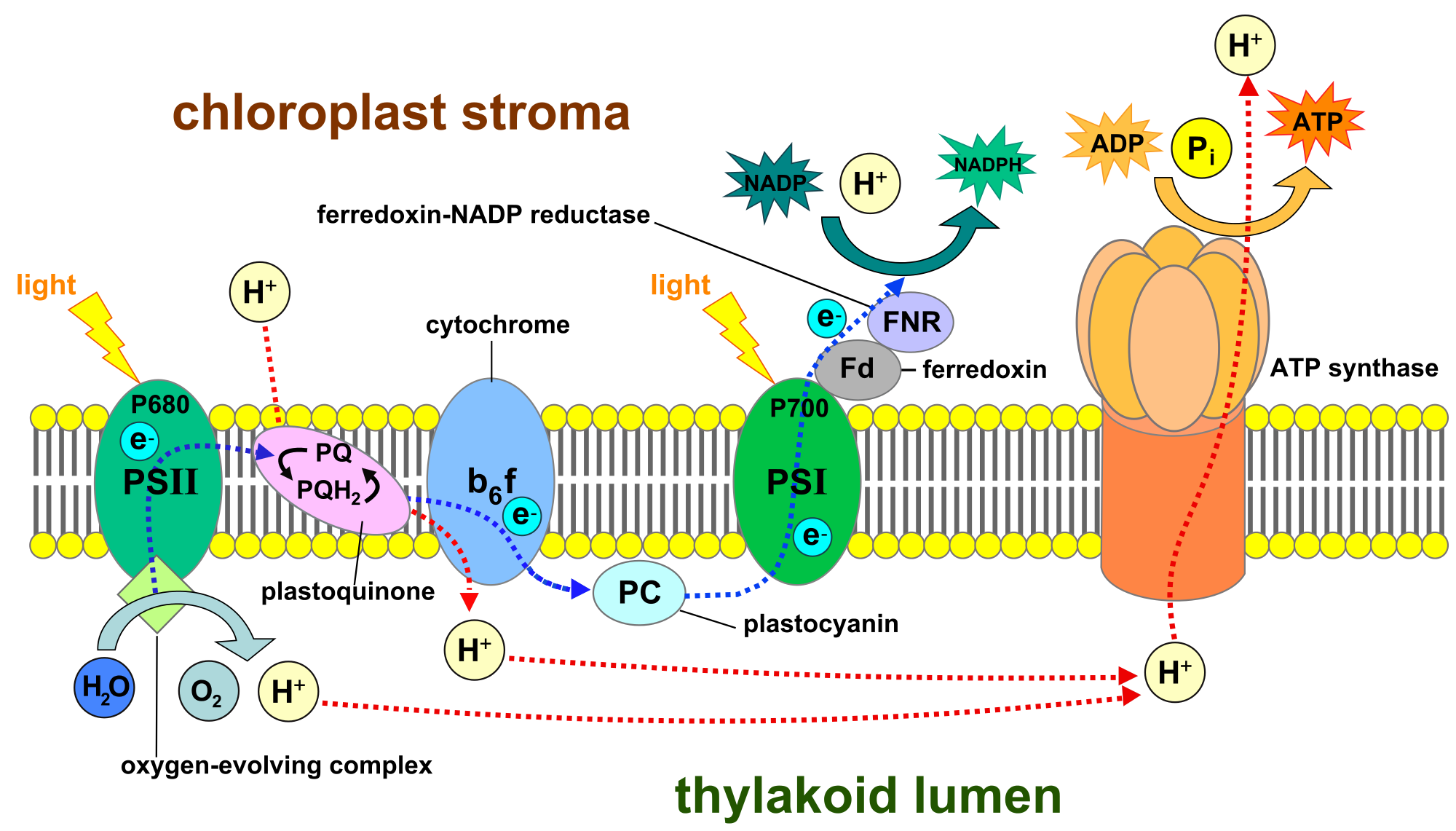to whales to people—need chemical
energy for all of their processes.
Some organisms, such as diatoms
and plants,
absorb energy from sunlight. Some of that energy is stored in sugars. Cells break down sugars to produce usable chemical energy for their functions. Without organisms that make sugars, living things on Earth could not survive.
1. ATP
2. energy released for cell processes
3. ADP
4. energy from breakdown of molecules
5. Carbohydrate: Energy:4 cal/mg Details; 36 ATP from glucose; most common molecule broken down to make ATP
6.Lipid: Energy: 9 cal/mg; Detail: 146ATP from a triglyceride; stores most of the energy in people
7. Protein: Energy:4 cal/mg; Details: infrequently broken down by cells to make ATP
Chemo= chemical
Chemosynthesis—process through which some organisms use chemicals from the environment (rather than light energy) as a source of energy to build carbon-based molecules
ATP synthase in Plants
Section 4.1
Lets make a connection:
Lets Review!!
ATP synthase in Plants
Recap Questions:
Describe how you get energy indirectly from the food that you eat.
Compare and Contrast How are the energy needs of plant cells similar to those of animal cells? How are they different?
Section 4.1
Solar-powered calculators, homes, and cars are just a few things that use energy from sunlight. In a way, you are also solar-powered. Of course, sunlight does not directly give you the energy you need to play a sport or read this page. That energy comes from ATP. Molecules of ATP are often made from the breakdown of sugars, but how are sugars made? Plants capture some of the energy in sunlight and change it into chemical energy stored in sugars.
Photo=light
Synthesis=put together
Some organisms are called producers because they produce the source of chemical energy for themselves and for other organisms.
Photo=light
Synthesis=put together
Photosynthesis—process through which light energy is captured and used to build sugars that store chemical energy
Chloroplasts are membrane-bound organelles where Photosynthesis takes place in plants.
Chloro=green
Phyll=leaf
Chlorophyll: a green pigment that gives plants their green color and absorb visible light to provide energy for Photosynthesis.
Chloroplasts are membrane-bound organelles where Photosynthesis takes place in plants.
Chloro=green
Phyll=leaf
Thylakoid: coined shape,found within the chloroplast that contains the components of photosynthesis.
2. sunlight
3. water
4. thylakoid; chlorophyll and other light-absorbing molecules
5. oxygen
6. energy-carrying molecules transferred to light-independent reactions
7. carbon dioxide from the atmosphere
8. light-independent reactions (Calvin cycle)
9. one six-carbon sugar (glucose)
Photosynthesis equation:
6CO2 + 6H2O ⇒⇒⇒⇒⇒⇒C6H12O6 + 6O2
Many arrows are used because many chemical reactions occur with the help of many enzymes.
Many arrows are used because many chemical reactions occur with the help of many enzymes.
Light-dependent reaction:absorbs energy from sunlight and transfers energy to the light-dependent reaction.
light-independent reaction:uses energy absorbed during light dependent reactions to synthesize carbohydrates.
light-independent reaction:uses energy absorbed during light dependent reactions to synthesize carbohydrates.
Lets See it again!
Recap Question:
Explain why photosynthesis is important for building the structure of plant cells.
Section 4.4

mitochondria are like power plants that burn fuel to produce electricity.
In a power plant, a processed fuel is burned in the presence of oxygen, and energy is released as useful electricity.
During cellular respiration, oxygen and digested molecules from food are used to produce useful energy in the form of ATP.
In a power plant, a processed fuel is burned in the presence of oxygen, and energy is released as useful electricity.
During cellular respiration, oxygen and digested molecules from food are used to produce useful energy in the form of ATP.
Cellular respiration—process through which sugars and other carbon-based molecules are broken down to produce ATP when oxygen is available
2. pyruvate: three-carbon molecules
3. Krebs cycle; mitochondrial matrix; produces 2 ATP
4. carbon dioxide
5. ATP,NADH, FADH2 energy carriers are transferred to 2nd aerobic stage
6. energy from glycolysis and oxygen enter the process
7. Electron Transport Chain produces water and;
large number of ATP molecules (34)
large number of ATP molecules (34)
Cellular respiration equation: 
C6H12O6 + 6O2 ⇒⇒⇒⇒⇒⇒6CO2 + 6H2O
Kreb Cycle:produces molecules that carry energy to the second part of cellular respiration

C6H12O6 + 6O2 ⇒⇒⇒⇒⇒⇒6CO2 + 6H2O
Kreb Cycle:produces molecules that carry energy to the second part of cellular respiration
Recap Questions:
2. Is oxygen necessary for the production of all ATP in your cells? Why or why not?
Section 4.6
Making Connections:
Think about a time when you worked or exercised hard. Maybe you moved heavy boxes or furniture.
Maybe, playing basketball, you found yourself repeatedly running up and down the court.
Your arms and legs began to feel heavy, and they seemed to lose strength.
Your muscles became sore, and even when you rested you kept breathing hard. Your muscles were using fermentation
Fermentation—process that allows glycolysis to continue to produce ATP when oxygen is not available, but does not produce ATP. It removes electrons from NADH and recycles NAD+.
Lactic acid fermentation—pyruvate and NADH enter fermentation; NADH used to convert pyruvate into lactic acid; NAD+ recycled to glycolysis
Alcoholic fermentation
—pyruvate and NADH enter fermentation; NADH used to convert pyruvate into an alcohol and carbon dioxide; NAD+ recycled to glycolysis
—pyruvate and NADH enter fermentation; NADH used to convert pyruvate into an alcohol and carbon dioxide; NAD+ recycled to glycolysis
Commercial Uses of Fermentation:
 1. Lactic Acid Fermentation: Yogurt
1. Lactic Acid Fermentation: Yogurt 2.Lactic Acid Fermentation: Cheese

3. Alcoholic Fermentation: bread
Fermentation
Recap Questions:
Recap Questions:
1. How are lactic acid fermentation and alcoholic fermentation similar? How are they different?
2. Describe the similarities and differences between cellular respiration and fermentation.























No comments:
Post a Comment